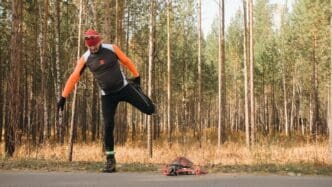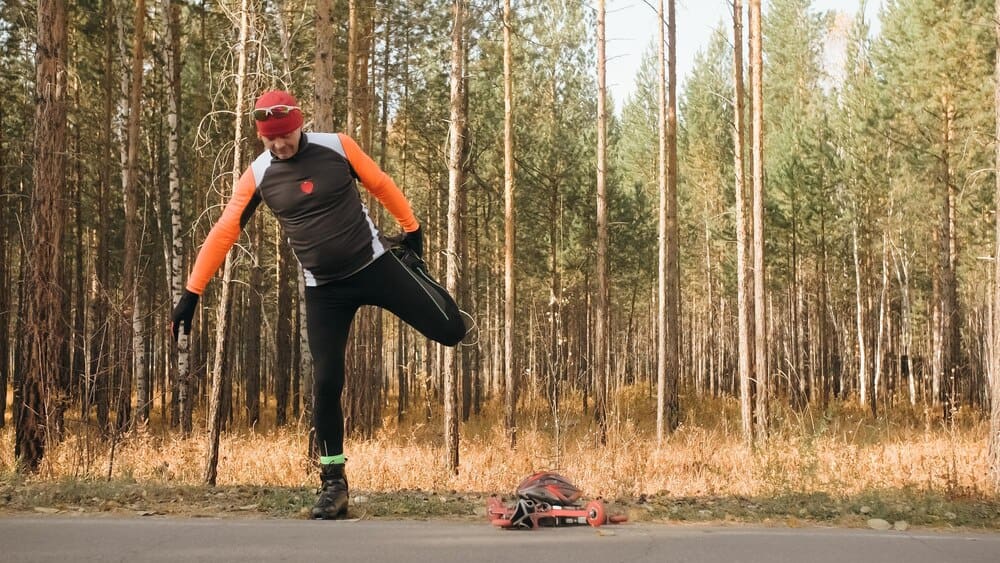For runners of all levels, from weekend joggers to elite marathoners, chafing is a painful and disruptive reality that can derail training and tarnish the joy of the sport. This common skin irritation occurs when friction, typically from skin rubbing against skin or fabric, is combined with moisture, leading to redness, stinging, and even bleeding in high-friction areas like the inner thighs, underarms, and along sports bra lines. The solution, however, is both simple and effective: using dedicated anti-chafing products that create a protective, invisible barrier on the skin. By proactively applying these balms, creams, or powders before a run, athletes can prevent the friction that causes chafing, ensuring their focus remains on their performance and not on painful skin damage.
What is Chafing and Why Does It Happen?
At its core, chafing is a friction-induced skin injury. Think of it as a mild, repetitive abrasion. The top layer of your skin, the epidermis, is worn away by a persistent rubbing motion, exposing the more sensitive layers beneath.
This process is significantly accelerated by moisture, primarily sweat. Wet skin is softer and more vulnerable to damage than dry skin. Sweat also contains salt, which can crystallize as it dries, creating a gritty, sandpaper-like texture that exacerbates the irritation.
Several factors contribute to a runner’s risk of chafing. The most obvious is distance; the more steps you take, the more opportunities there are for rubbing. Heat and humidity increase sweating, creating the ideal wet conditions for chafing to thrive. Finally, ill-fitting apparel or clothes made from absorbent materials like cotton can be a primary culprit, as they trap moisture and have seams that can rub relentlessly against the skin.
The Proactive Arsenal: Types of Anti-Chafing Products
The market for anti-chafing products is robust, offering various formulations to suit different needs and preferences. Understanding the main categories is the first step toward finding your perfect solution.
Balms and Sticks: The Runner’s Go-To
Solid anti-chafing sticks are arguably the most popular choice for runners, prized for their convenience and long-lasting, mess-free application. They look and feel much like a deodorant stick, allowing you to apply a protective layer directly to the skin without getting your hands greasy.
These products work by depositing a dry, invisible, wax-like barrier that reduces the coefficient of friction. Skin and fabric glide over the treated area instead of catching and rubbing. Most formulas are sweat- and water-resistant, providing reliable protection for hours. For example, the industry-standard Body Glide uses plant-derived waxes to create this durable shield, making it a staple in nearly every runner’s gear bag.
Other popular options, like Squirrel’s Nut Butter, offer all-natural alternatives made with ingredients like coconut oil and cocoa butter. These can be particularly effective and soothing, though they may have a slightly greasier feel upon initial application.
Creams and Lotions: The Lubricating Solution
Anti-chafing creams and lotions provide protection through lubrication rather than a waxy barrier. These products are often preferred by cyclists—hence the popular brand name Chamois Butt’r—but are equally effective for runners.
Creams are absorbed slightly into the skin while also leaving a smooth, slick surface. They are excellent for providing immediate comfort and can feel more moisturizing than sticks. Many users find them particularly effective for very sensitive areas.
The main drawback is that application can be messier, and some formulas may need to be reapplied more frequently during very long or sweaty runs compared to a waxy balm. However, for those who dislike the feel of a solid stick, a high-quality cream is an outstanding alternative.
Powders: The Moisture-Wicking Choice
Anti-chafing powders work on a different principle: they primarily aim to keep the skin dry. By absorbing excess moisture, they reduce the softening of the skin and prevent the damp environment where chafing flourishes. Products like Anti Monkey Butt Powder are formulated with calamine or other anti-irritant ingredients to both absorb sweat and soothe the skin.
Powders are best suited for areas prone to general dampness but with less intense, direct friction, such as under the breasts or in the groin area. Their main limitation is durability. Powder can wear off or clump when exposed to heavy sweat, making it less reliable for long-distance runs where friction is a major concern.
Specialized Solutions: Apparel and Spot Treatments
Sometimes, the best product isn’t a topical application but the gear you wear. The role of apparel in preventing chafing cannot be overstated.
Anti-Chafing Apparel
Modern running apparel is engineered to combat chafing. Look for shorts, leggings, and shirts made from synthetic, moisture-wicking fabrics like polyester, nylon, or spandex. These materials pull sweat away from your skin to the fabric’s surface, where it can evaporate.
Compression shorts or shorts with a built-in liner are game-changers for preventing inner-thigh chafing. The snug fit ensures there is no loose fabric to bunch up and rub, and the skin-on-skin contact is eliminated. Similarly, seamless construction and flatlock seams minimize potential irritation points on shirts and sports bras.
Nipple Guards and Tapes
For many runners, particularly men, nipple chafing (often called “runner’s nipple”) is an excruciatingly painful issue. The constant friction of a sweaty shirt, especially a cotton one, can rub the nipples raw. The best solution is a physical barrier.
Specialized products like NipEaze or NipGuards are small, adhesive covers designed specifically for this purpose. In a pinch, simple waterproof medical tape or even circular adhesive bandages can work just as well. This is a non-negotiable for any man running more than a few miles, especially in humid weather.
The Art of Application: A Practical Guide
Owning the right product is only half the battle; using it correctly is what guarantees a comfortable run. Follow these best practices for maximum effectiveness.
First and foremost, be proactive. Apply your anti-chafing product before you get dressed for your run. It’s a preventative measure, not a treatment. Applying it after you already feel the sting is too late.
Be generous with your application. A single, tentative swipe is not enough. Cover the entire area that is prone to rubbing, extending the application slightly beyond the trouble spot for full coverage. Don’t be afraid to use a thick layer.
Know your hotspots. Common areas include the inner thighs, underarms, along the band and straps of a sports bra, where a heart rate monitor strap sits, the lower back where a waistband might rub, and between the toes or on the back of the heels to prevent blisters (which are a form of chafing).
For ultra-long distances like marathons or ultramarathons, plan to reapply. Carry a travel-sized stick or single-use cream packet in a pocket or running belt. A quick reapplication at an aid station can make a world of difference in the final miles.
Aftercare: How to Treat Chafing When It Occurs
Even with the best preparation, chafing can sometimes happen. If you finish a run and find a red, irritated patch of skin, proper aftercare is crucial to promote healing and prevent infection.
The first step is to clean the area gently. Use lukewarm water and a mild, antibacterial soap. Avoid scrubbing, which will only cause more pain and irritation. Pat the area completely dry with a soft, clean towel—do not rub.
Once the area is clean and dry, apply a soothing, healing ointment. Diaper rash creams containing zinc oxide are excellent, as they create a barrier against moisture and have anti-inflammatory properties. Other effective options include petroleum jelly-based products like Aquaphor or Vaseline, which protect the skin and keep it moisturized to facilitate healing.
Allow the area to breathe as much as possible. Wear loose, soft clothing made from natural fibers like cotton when you’re recovering. If the chafing is severe, painful, or shows signs of infection (like pus or excessive swelling), it’s important to take a day or two off from running and consult a healthcare professional if it doesn’t improve.
Conclusion
Chafing is more than just a minor annoyance; it’s a painful obstacle that can undermine your consistency and enjoyment of running. Fortunately, it is almost entirely preventable. By understanding the interplay of friction and moisture and arming yourself with the right anti-chafing products—be it a waxy balm, a lubricating cream, or properly engineered apparel—you can take control. Experiment with different products to find what works best for your body and running conditions, apply it liberally and proactively, and make painful chafing a thing of the past.







